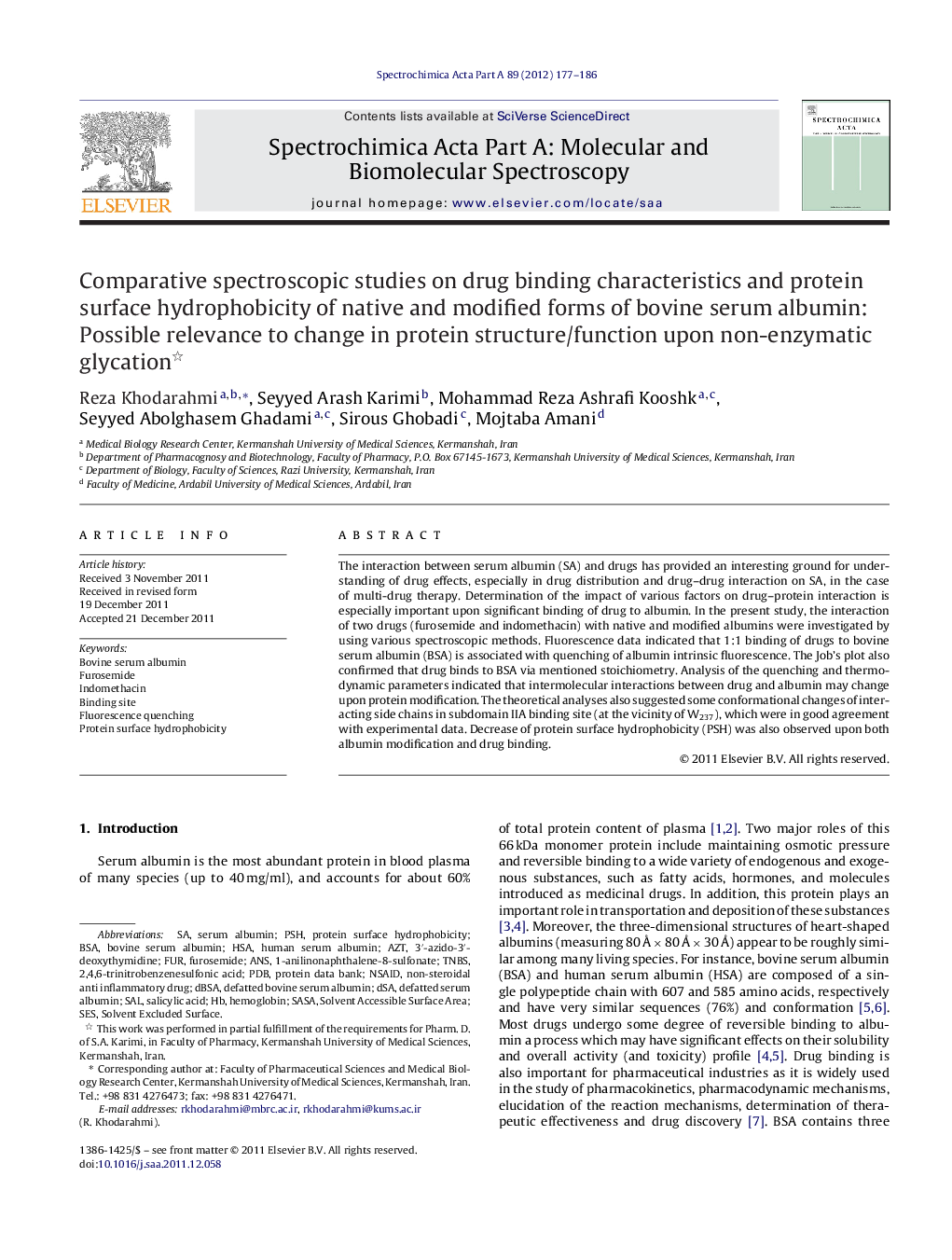| Article ID | Journal | Published Year | Pages | File Type |
|---|---|---|---|---|
| 1234665 | Spectrochimica Acta Part A: Molecular and Biomolecular Spectroscopy | 2012 | 10 Pages |
The interaction between serum albumin (SA) and drugs has provided an interesting ground for understanding of drug effects, especially in drug distribution and drug–drug interaction on SA, in the case of multi-drug therapy. Determination of the impact of various factors on drug–protein interaction is especially important upon significant binding of drug to albumin. In the present study, the interaction of two drugs (furosemide and indomethacin) with native and modified albumins were investigated by using various spectroscopic methods. Fluorescence data indicated that 1:1 binding of drugs to bovine serum albumin (BSA) is associated with quenching of albumin intrinsic fluorescence. The Job's plot also confirmed that drug binds to BSA via mentioned stoichiometry. Analysis of the quenching and thermodynamic parameters indicated that intermolecular interactions between drug and albumin may change upon protein modification. The theoretical analyses also suggested some conformational changes of interacting side chains in subdomain IIA binding site (at the vicinity of W237), which were in good agreement with experimental data. Decrease of protein surface hydrophobicity (PSH) was also observed upon both albumin modification and drug binding.
Graphical abstractFigure optionsDownload full-size imageDownload as PowerPoint slideHighlights► Glycation of BSA can influence on drug–protein interactions. ► Protein surface hydrophobicity was decreased upon both albumin modification and drug binding. ► Theoretical and thermodynamic data suggested that the interacting side chains change due to protein modification. ► The indomethacin binding site on the modified BSA may be a site, outside subdomain IIA.
